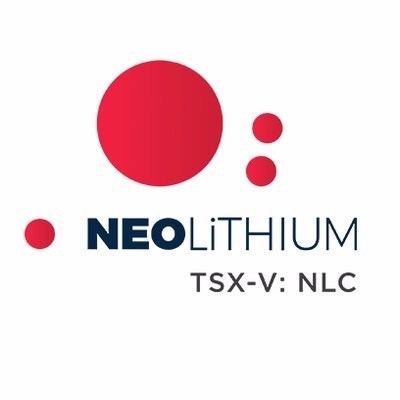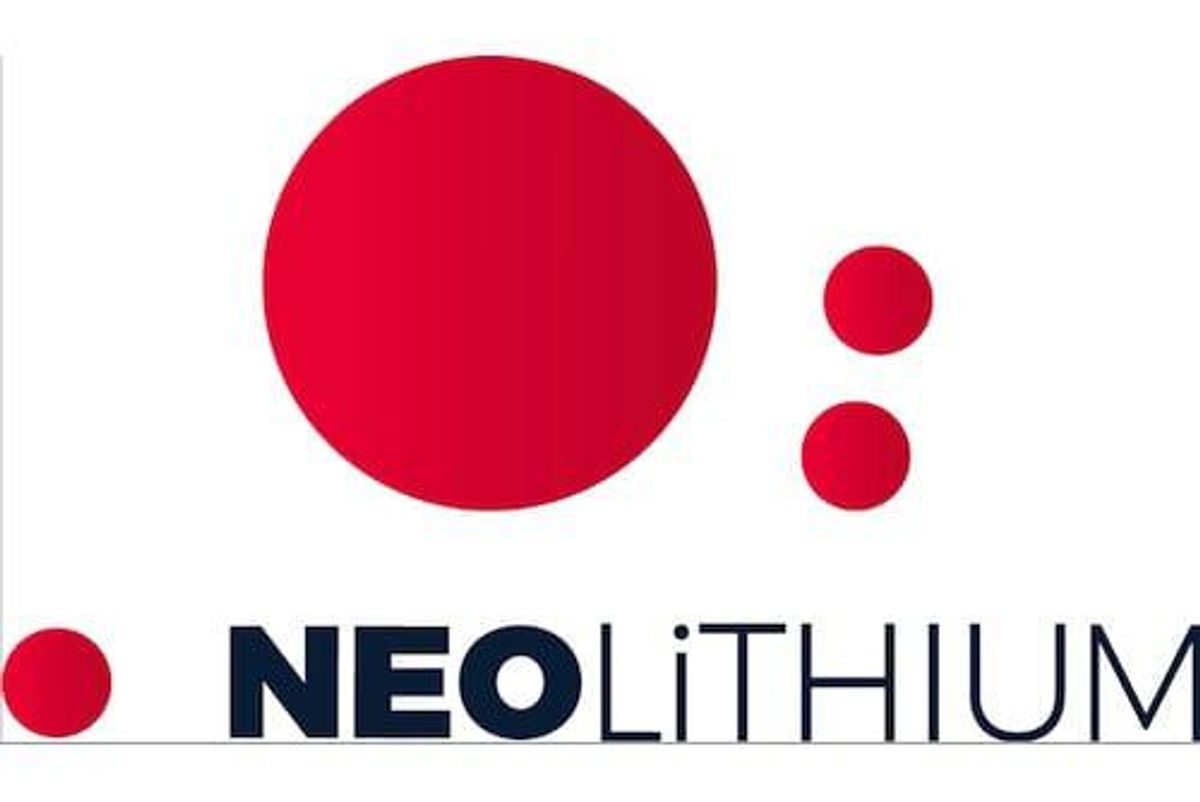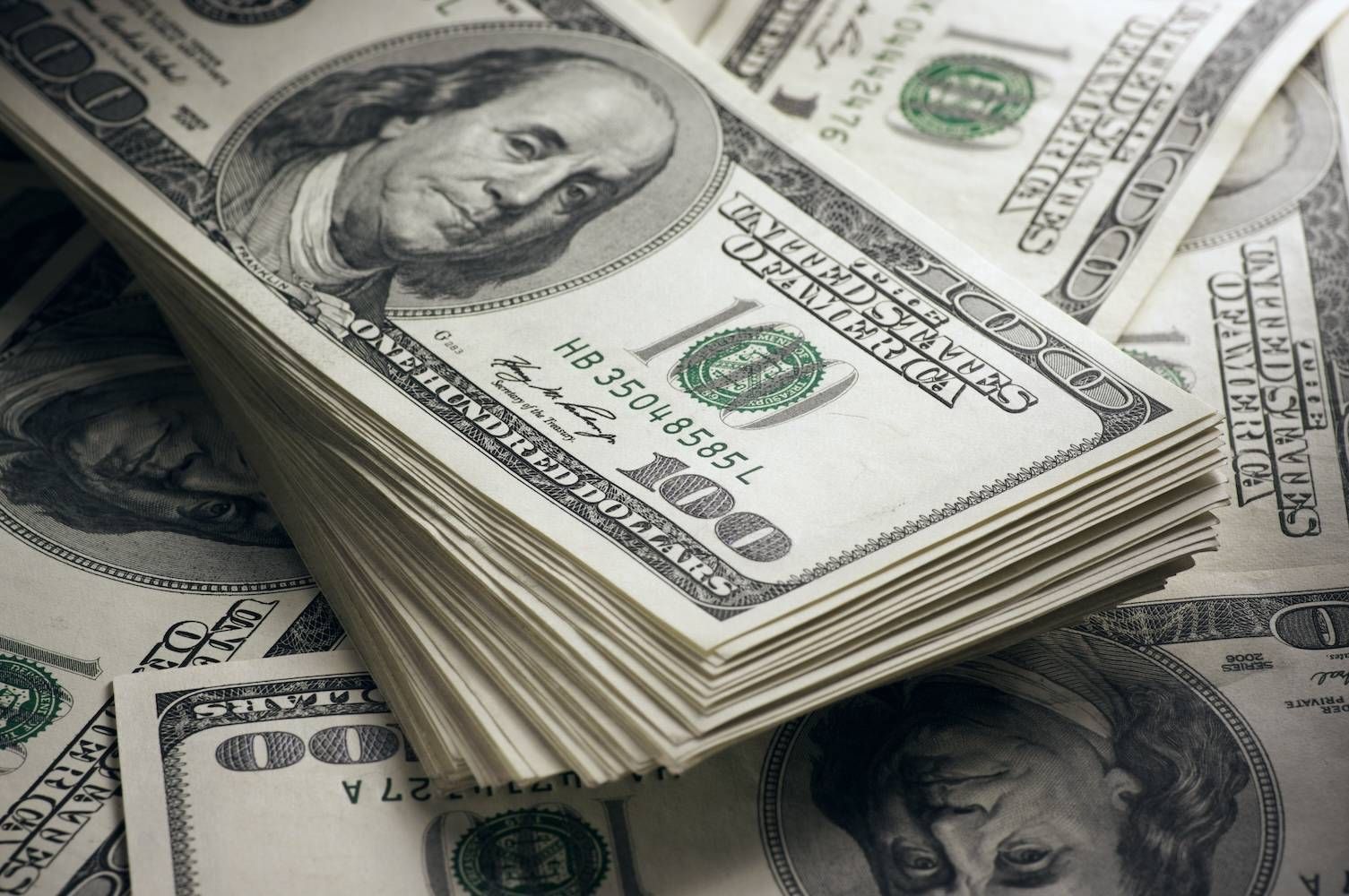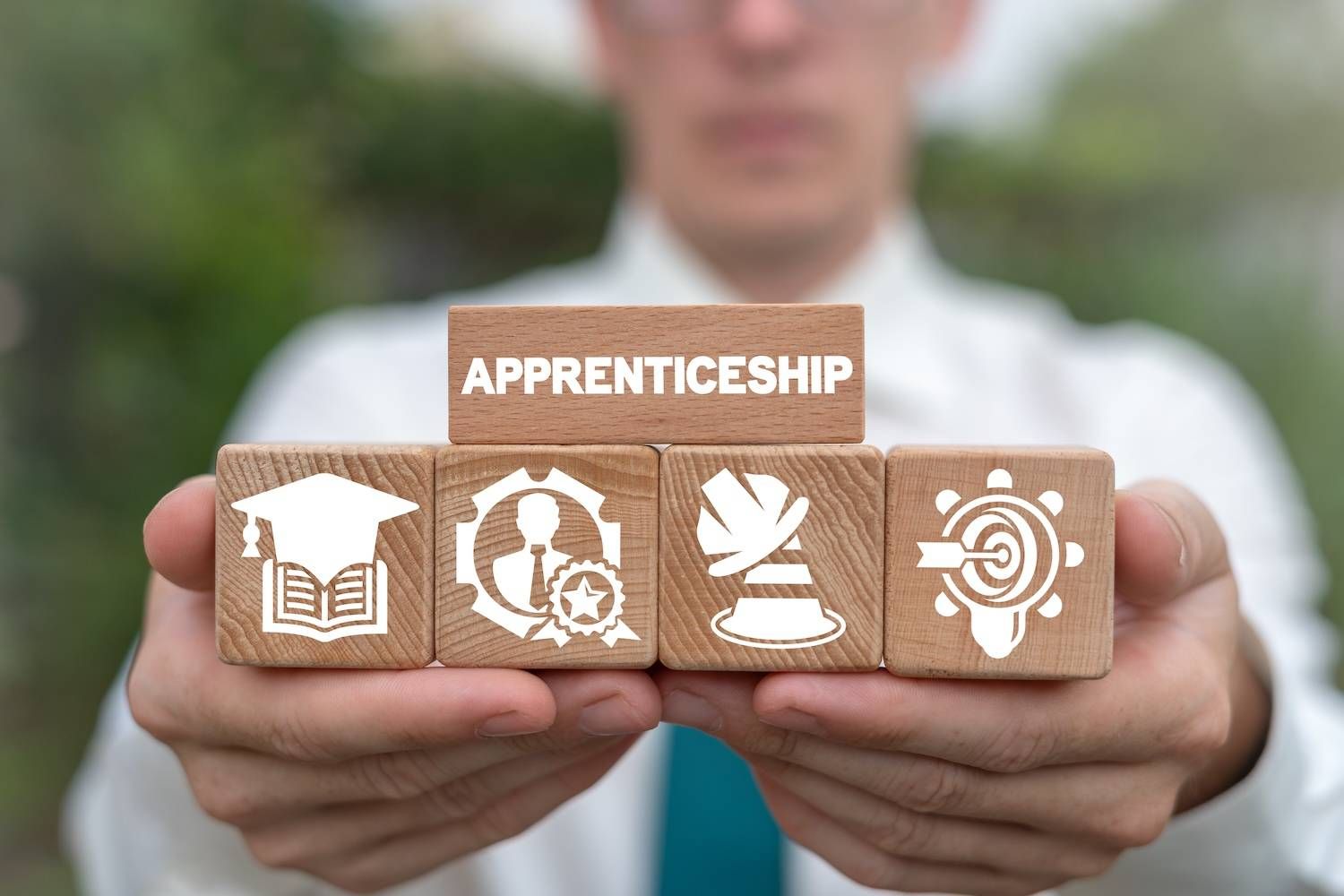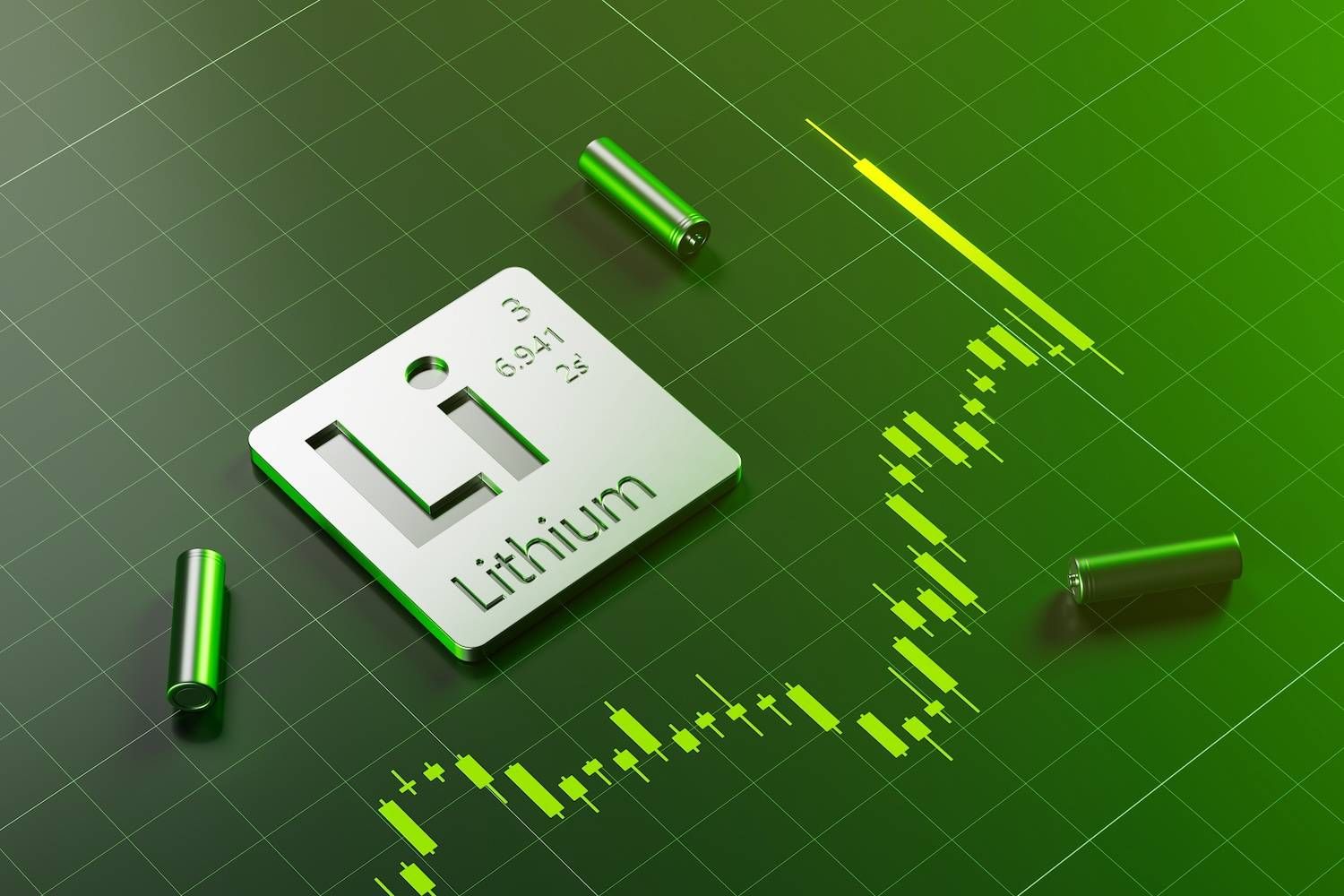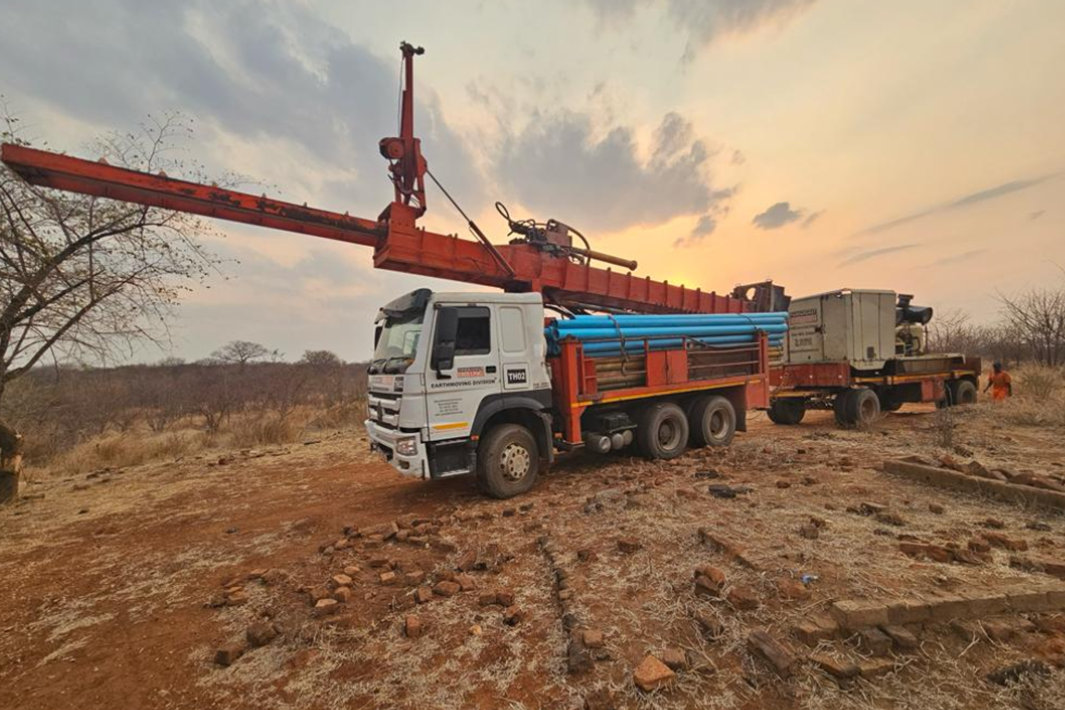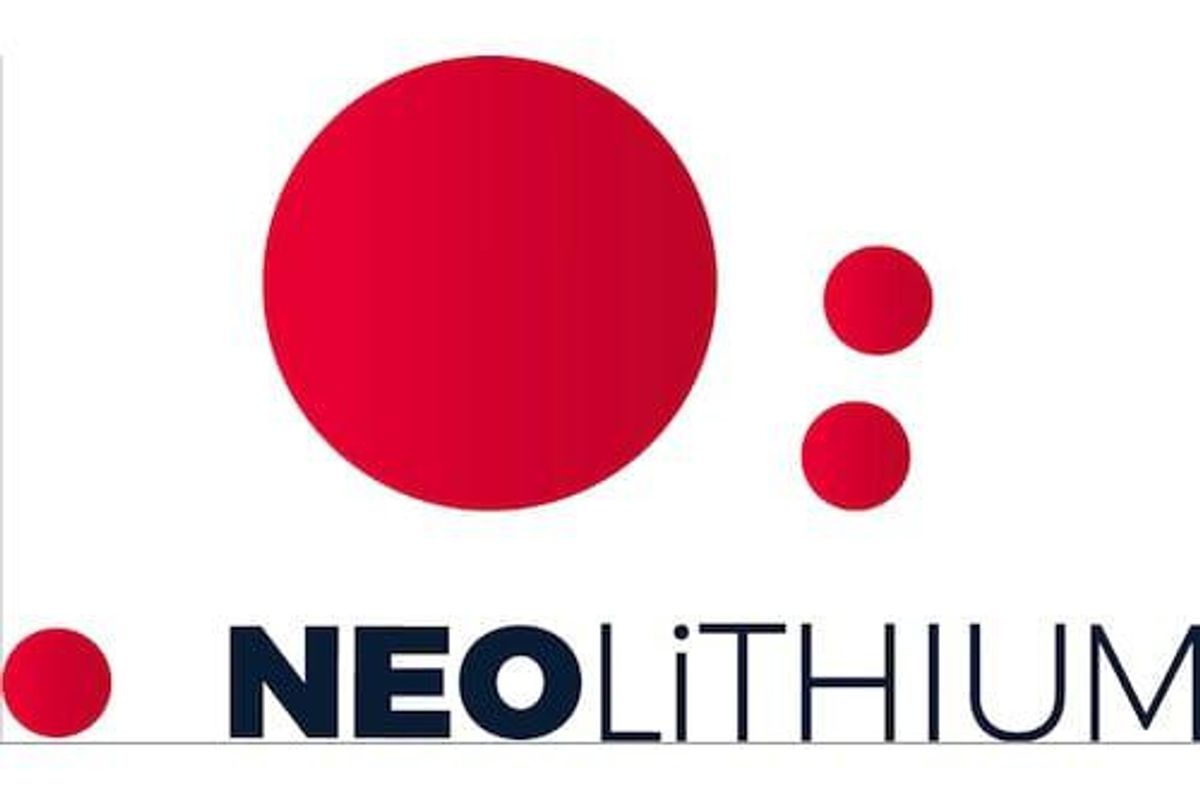
- Highest battery grade lithium carbonate produced to date with 99.9% purity
- The Company will now convert the Plant from batch mode into continuous mode to produce large samples for specification certification
- Lithium carbonate has now been considered acceptable for the development of batteries by CATL
Neo Lithium Corp. (" Neo Lithium " or the " Company ") (TSXV: NLC) (OTCQX: NTTHF) (FSE: NE2) is pleased to announce that the Company has reached an important milestone in lithium carbonate production at its pilot plant for its wholly owned Tres Quebradas lithium project (" 3Q Project ") in Catamarca Province, Argentina .
Using the upgraded alkali methodology, the Company further advanced the crystallization parameters as well as other necessary minor adjustments, which resulted in achieving battery-grade lithium carbonate with a purity of 99.891% , which is acceptable by Contemporary Amperex Technology Co. Limited (CATL) for its LFP batteries standard. This methodology will by applied to the design of the 3Q Project lithium carbonate pilot plant ("the Plant") in the feasibility study being carried out by Worley and expected to be completed by the end of Q3 2021.
The composition of impurities in the lithium carbonate is as follows*:
| SO4 | Cl | Mg | B | Al | Fe | K | Ca | Si | Na | Insoluble | Humidity |
| % | % | % | % | % | % | % | % | % | % | % | % |
| 0.039 | 0.022 | 0.003 | 0.004 | 0.002 | 0.001 | 0.014 | 0.001 | 0.002 | 0.001 | 0.006 | 0.01 |
| | *Other elements |
The Company will now convert the Plant from batch mode into continuous mode to produce large samples for specification certification. Neo Lithium has already sent samples to CATL in China for their own chemical analysis.
"We have reached our objective to produce high-quality lithium carbonate while minimizing the reagent consumption and freshwater footprint," stated Waldo Perez , President and CEO of Neo Lithium. "We are now ready to complete the feasibility study with the final parameters achieved in the piloting stage."
The Pilot Plant Process
Neo Lithium received the Plant built by the Instituto de Investigaciones Tecnologicas from Universidad de Concepcion, Chile in February 2019 . The Company's engineers assembled the Plant in the warehouse of the town of Fiambalá, Catamarca, located 160km from the 3Q salar. The Plant operated in batches and has a designed annual capacity of 50 tonnes of lithium carbonate per year using concentrated brine from the 3Q Project with 3.2% to 3.6% lithium brine.
The in-situ brine comes from the high-grade northern sector of the 3Q Project salar, with an initial chemical composition as follows:
| Li | Cl | Na | Ca | Mg | K | B | Density |
| mg/L | mg/L | mg/L | mg/L | mg/L | mg/L | mg/L | g/ml |
| 1,175 | 212,662 | 68,861 | 51,529 | 1,875 | 11,319 | 1,567 | 1.24 |
After approximately one year the brine is evaporated, and sodium chloride, potassium chloride and calcium chloride are removed to produce concentrated brine with a composition as follows:
| Li | Cl | Na | Ca | Mg | K | B | Density |
| mg/L | mg/L | mg/L | mg/L | mg/L | mg/L | mg/L | g/ml |
| 42,842 | 504,331 | 5,162 | 135,692 | 1,829 | 25,859 | 6,140 | 1.45 |
The Plant produced the first batch of lithium carbonate with 99.1% purity in September 2019 and in March 2020 the engineers achieved a 99.535% purity following the process described in Technical Report "Preliminary Feasibility Study (PFS) - 3Q Project NI 43-101 Report Catamarca, Argentina " filed on May 8th, 2019 . This process uses solvent extraction phase (SX-B) for boron removal, a sulfation phase for calcium removal using sodium sulfate and a liming and carbonation phase to remove magnesium and any remaining calcium.
At that point, the Company's technical team designed a more efficient process to produce higher purity lithium carbonate with lower consumption of fresh water, reagents, and energy. This process was called the alkali route and in this process the sulfation phase for calcium removal is changed by an alkalization phase with sodium hydroxide. The first production of lithium carbonate with this process reached 99.599% purity in March 2020 and 99.797% purity in January 2021 . The Company has now achieved the final objective of 99.891% which is considered acceptable as a final product of high-quality battery grade material for the production of LFP batteries by CATL. This process will be used as final design for the feasibility study scheduled to be completed by Worley by the end Q3 2021.
The Company today has about 50 tonnes of concentrated brine ready to be converted to lithium carbonate by the Plant and has also upgraded the pilot ponds to mimic the pond design of the feasibility study parameters (please refer to the April 26, 2021 , press release for more information).
Since the arrival of the Plant over 30 batches of lithium carbonate have been produced, and the final quality goals have been achieved. The next phase is to set up the Plant in continuous mode to produce larger volume samples for final specification tests and final certification.
The Company is also pleased to announce that it has engaged Kemetco of Canada to evaluate the physical parameters of the final product.
Technical Information
The samples collected were delivered by Company personnel to Andesmar Transport Company ("Andesmar") in La Rioja, in the province of Rioja. Andesmar delivered the samples by truck to ASL, an ISO 9001-2008-certified laboratory in Mendoza, Argentina . ASL used the following analytical methodologies: ICP-OES (inductively-coupled plasma-optical (atomic) emission spectrometry) to quantify boron, barium, calcium, lithium, magnesium, manganese, and potassium; an argentometric method to assay for chloride; a gravimetric method to analyze for sulfate; a volumetric analysis (acid/base titration) for the evaluation of alkalinity (as CaCO3); a gravimetric method to determine density and total dissolved solids; and, a laboratory pH meter to determine pH. All analytical work is subject to a systematic and rigorous Quality Assurance-Quality Control. A reference ("standard") sample was inserted into the sample stream at a frequency of approximately 1 in 15 samples; a field blank was inserted at a frequency of approximately 1 in 15 samples; and a field duplicate sample was inserted at a frequency of approximately 1 in 15 samples.
Waldo Perez , Ph.D, P.Geo., the CEO and President of Neo Lithium Corp. is the Qualified Person who approved the scientific and technical disclosure in the news release.
About Neo Lithium Corp.
Neo Lithium Corp. has quickly become a prominent new name in lithium brine development by virtue of its high quality 3Q Project and experienced team. Neo Lithium is rapidly advancing its 100% owned 3Q Project - a unique high-grade lithium brine lake and salar complex in Latin America's "Lithium Triangle".
The 3Q Project is located in the Catamarca Province, the largest lithium producing area in Argentina covering approximately 35,000 ha including a salar complex of approximately 16,000 ha.
Additional information regarding Neo Lithium Corp. is available on SEDAR at www.sedar.com under the Company's profile and at its website at www.neolithium.ca , including various pictures of ongoing work at the project.
Neither TSX Venture Exchange nor its Regulation Services Provider (as that term is defined in the policies of the TSX Venture Exchange) accepts responsibility for the adequacy or accuracy of this release. The TSX Venture Exchange Inc. has in no way approved nor disapproved the contents of this press release.
Cautionary Note Regarding Forward Looking Statements - Certain information set forth in this news release may contain forward-looking statements. Such statements include but are not limited to, statements as to lithium brine grades at depth being consistent with surface results, the potential for resource expansion at depth, the potential of the northern salar sediments, and deeper sediments, for hosting brine, the ability to proceed to scoping studies quickly, proceeding with continued work for additional economic studies the potential for production expansion in the Company's assessment of the economic potential of the 3Q Project, that test results are indicative of future results, and the additional of additional independent directors. Generally, forward-looking statements can be identified by the use of words such as "plans", "expects" or "is expected", "scheduled", "estimates" "intends", "anticipates", "believes", or variations of such words and phrases, or statements that certain actions, events or results "can", "may", "could", "would", "should", "might" or "will", occur or be achieved, or the negative connotations thereof. These forward-looking statements are subject to numerous risks and uncertainties, certain of which are beyond the control of the Company, which could cause the actual results, performance or achievements of the Company to be materially different from the future results, performance or achievements expressed or implied by such statements. These risks include, without limitation, risks related to failure to obtain adequate financing on a timely basis and on acceptable terms, political and regulatory risks associated with mining and exploration activities, including environmental regulation, risks and uncertainties relating to the interpretation of drill and sample results, risks related to the uncertainty of cost and time estimation and the potential for unexpected delays, costs and expenses, risks related to metal price fluctuations, the market for lithium products, competition for experienced directors in the junior mineral exploration and development sector, and other risks and uncertainties related to the Company's prospects, properties and business detailed elsewhere in the Company's disclosure record. Although the Company believes its expectations are based upon reasonable assumptions and has attempted to identify important factors that could cause actual actions, events or results to differ materially from those described in forward-looking statements, there may be other factors that cause actions, events or results not to be as anticipated, estimated or intended and undue reliance should not be placed on forward-looking statements.
SOURCE Neo Lithium Corp.

![]() View original content to download multimedia: https://www.newswire.ca/en/releases/archive/June2021/17/c4461.html
View original content to download multimedia: https://www.newswire.ca/en/releases/archive/June2021/17/c4461.html
